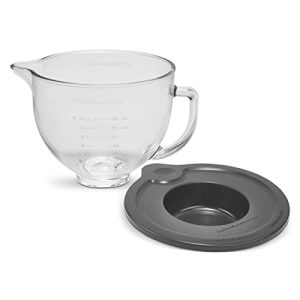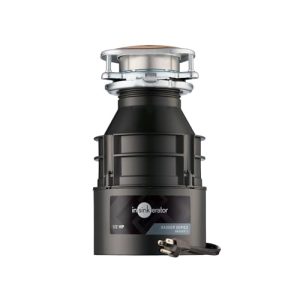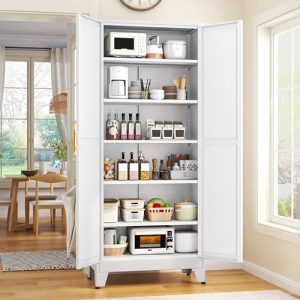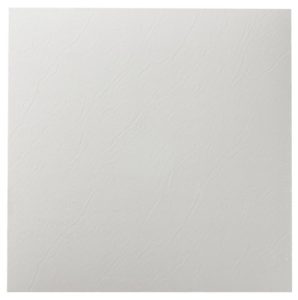Are you wondering if any light bulb fits your Kitchen Aid refrigerator? It’s a common question that can save you time and hassle.
Choosing the wrong bulb can leave your fridge dark or even cause damage. But don’t worry—this guide will help you find the perfect light bulb for your Kitchen Aid fridge. Keep reading to make sure you get the right fit and keep your fridge lighting bright and reliable.
Kitchenaid Refrigerator Light Types
KitchenAid refrigerators use specific light types to ensure proper illumination inside. Choosing the right bulb affects brightness, energy use, and bulb life. Understanding the common bulb types helps pick the best option for your fridge.
Incandescent Bulbs
Incandescent bulbs are the traditional choice for many refrigerators. They produce warm light and work well in cold environments. These bulbs use more energy and last shorter than newer types. They are easy to find and usually cost less.
Led Bulbs
LED bulbs are popular for KitchenAid refrigerators. They use less energy and last much longer than incandescent bulbs. LEDs provide bright, clear light that helps you see inside better. They also produce less heat, which is good for food storage.
Halogen Bulbs
Halogen bulbs give bright, white light with good color clarity. They are more energy-efficient than incandescent bulbs but less than LEDs. Halogen bulbs run hotter, which may affect fridge temperature slightly. They are less common but still compatible with some models.
Common Bulb Sizes For Kitchenaid
Choosing the right light bulb for a KitchenAid refrigerator is important for proper illumination. Different models may use various bulb sizes and types. Knowing the common bulb sizes helps in finding the correct replacement quickly. This prevents damage and ensures the fridge stays well-lit.
Standard Bulb Bases
KitchenAid refrigerators usually use bulbs with standard bases. The most common base types include:
- E26 medium screw base – fits many fridge models
- G9 bi-pin base – found in some newer or compact designs
- BA15d bayonet base – less common but used in certain models
Checking the existing bulb base before buying is essential. The base must match to fit securely and work properly.
Wattage Considerations
Bulb wattage affects brightness and energy use inside the fridge. KitchenAid refrigerators typically use bulbs between 15 and 40 watts.
Using a bulb with higher wattage than recommended can cause overheating. Lower wattage bulbs provide less light but save energy.
Always follow the manufacturer’s wattage guidelines to maintain safety and performance.
Compatibility Factors
When choosing a light bulb for your Kitchen Aid refrigerator, consider compatibility factors. Not all bulbs fit every fridge model. Understanding these factors helps ensure the right fit. Here, we discuss socket design, voltage requirements, and heat emission.
Socket Design
The socket design is crucial for bulb compatibility. Kitchen Aid refrigerators often use specific sockets. Common types include E12 and E26. Check your fridge’s manual for the exact socket type. This ensures the bulb fits securely.
Voltage Requirements
Voltage requirements are another key factor. Most refrigerators use 120-volt bulbs. Using a bulb with incorrect voltage can cause damage. Always verify the voltage before purchasing a bulb. This protects your appliance and ensures efficient lighting.
Heat Emission
Heat emission affects the efficiency of your refrigerator. High heat bulbs can increase internal temperature. This makes the fridge work harder to cool. Choose bulbs with low heat emission for optimal performance. LED bulbs are often a good choice for this reason.
Replacing The Light Bulb
Replacing the light bulb in your Kitchen Aid refrigerator is simple and quick. A working bulb brightens the fridge and helps you find items easily. Knowing how to replace it safely keeps the process smooth and avoids damage.
Locating The Bulb
The bulb usually sits at the top or side inside the fridge. Open the door fully to spot the light cover. It may be behind a plastic or glass shield. Check near the fan or on the ceiling of the fridge compartment.
Safe Removal
Turn off the refrigerator or unplug it before starting. This prevents any electric shock. Use a cloth to avoid direct contact with the bulb. Gently twist the bulb counterclockwise to loosen it. If the cover blocks the bulb, carefully remove the cover first.
Installing The New Bulb
Choose a bulb that matches your Kitchen Aid model’s specifications. Insert the new bulb into the socket and turn it clockwise until secure. Replace the light cover if you removed it earlier. Plug the fridge back in or turn it on. Test the light by opening the door.
Recommended Replacement Bulbs
Choosing the right replacement bulb for your KitchenAid refrigerator is key to maintaining optimal lighting and energy efficiency. Not every bulb fits perfectly, so knowing your options can save you time and hassle. Let’s look at the best types of replacement bulbs available to keep your fridge bright and efficient.
Original Equipment Manufacturer (oem) Bulbs
OEM bulbs are made by KitchenAid or their trusted suppliers. These bulbs guarantee a perfect fit and reliable performance because they match your refrigerator’s specifications exactly.
Using OEM bulbs means fewer risks of flickering or poor light quality. If you want peace of mind and hassle-free installation, these bulbs are a solid choice.
Aftermarket Options
Aftermarket bulbs come from third-party brands and often cost less than OEM bulbs. They can fit your KitchenAid fridge but vary in quality and durability.
When choosing aftermarket bulbs, look for those with good reviews and proper sizing. Have you ever tried a cheaper bulb only to find it didn’t last? Picking trusted brands can help avoid that frustration.
Energy-efficient Choices
LED bulbs are the best energy-efficient replacement for your fridge light. They use less power, last longer, and stay cool, which is safer inside a refrigerator environment.
Switching to LED bulbs can reduce your energy bill and the frequency of bulb changes. Have you thought about how much energy your fridge light consumes over a year? An LED upgrade might be worth it.
Troubleshooting Lighting Issues
Lighting problems in a Kitchen Aid refrigerator can be frustrating. These issues often affect the visibility inside the fridge. Troubleshooting lighting issues helps restore proper function quickly. It also ensures the fridge stays energy efficient and safe.
Check the light bulb first. The bulb may not fit correctly or be damaged. Inspect the socket and wiring for any visible problems. Sometimes, the problem lies in the door switch that controls the light.
Bulb Not Turning On
Start by confirming the bulb is screwed in tightly. A loose bulb often causes the light to stay off. Test the bulb in another socket to see if it works. If the bulb is fine, check the door switch for damage or dirt. The switch might not trigger the light if stuck or broken.
Flickering Light
Flickering usually means a poor connection. Look for a loose bulb or socket. Clean the contacts gently with a dry cloth. A bad door switch can also cause flickering. Replace the switch if cleaning does not fix the problem. Electrical issues inside the fridge might require professional help.
Burning Out Quickly
Bulbs that burn out fast may have wrong wattage. Use bulbs recommended by Kitchen Aid for best results. Check if the fridge has voltage problems causing bulb damage. Excess heat inside the fridge can shorten bulb life. Keep the fridge clean and well-ventilated to avoid this.
Maintenance Tips For Longevity
Maintaining your Kitchen Aid refrigerator ensures it runs smoothly for years. Proper care helps avoid frequent repairs and keeps the appliance efficient. Simple habits can extend the life of your fridge and its components, including the light bulb.
Regular Cleaning
Clean the interior and exterior of the refrigerator regularly. Wipe spills immediately to prevent stains and odors. Remove shelves and drawers to wash them with warm, soapy water. Use a soft cloth to clean the light bulb cover gently. This keeps the light bright and prevents dust buildup.
Avoiding Moisture Damage
Keep the fridge dry to prevent moisture harm to electrical parts. Avoid leaving the door open for long periods. Check door seals to ensure they close tightly. Use a dehumidifier in the kitchen if humidity is high. Moisture can cause corrosion and shorten the bulb’s lifespan.
Checking Electrical Connections
Inspect the fridge’s electrical connections regularly. Ensure the light bulb socket is free from damage or corrosion. Turn off the power before checking to stay safe. Replace any worn or loose wires immediately. Proper connections help the bulb work well without flickering or burning out quickly.
Frequently Asked Questions
Does Any Light Bulb Fit A Kitchenaid Refrigerator?
No, not all bulbs fit. KitchenAid refrigerators require specific bulbs designed for appliance use. Check your model’s manual for exact bulb types.
What Type Of Bulb Does Kitchenaid Refrigerator Use?
Most KitchenAid refrigerators use appliance-specific LED or incandescent bulbs. Always refer to your refrigerator’s user guide for the recommended bulb type.
Can I Replace Kitchenaid Fridge Bulbs With Standard Bulbs?
Standard bulbs may not fit or last long in fridges. Use bulbs specified for KitchenAid fridges to ensure proper function and safety.
How To Find The Right Bulb For Kitchenaid Refrigerators?
Check the fridge manual or label inside for bulb specifications. You can also visit KitchenAid’s official website or authorized parts dealers for the correct bulb.
Conclusion
Not every light bulb fits a Kitchen Aid refrigerator. These fridges need specific bulbs for safety and proper function. Always check the bulb size and type before buying. Using the wrong bulb can cause problems or damage. Stick to the recommended bulbs for best results.
This keeps your fridge bright and working well. Simple steps save time and avoid hassle later. Choose carefully and enjoy a well-lit kitchen fridge.

Sophie Hartwell is the founder of KitchenQuik.com, where she shares kitchen tips, smart cooking hacks, and the best product picks to make everyday cooking easier and more enjoyable.




